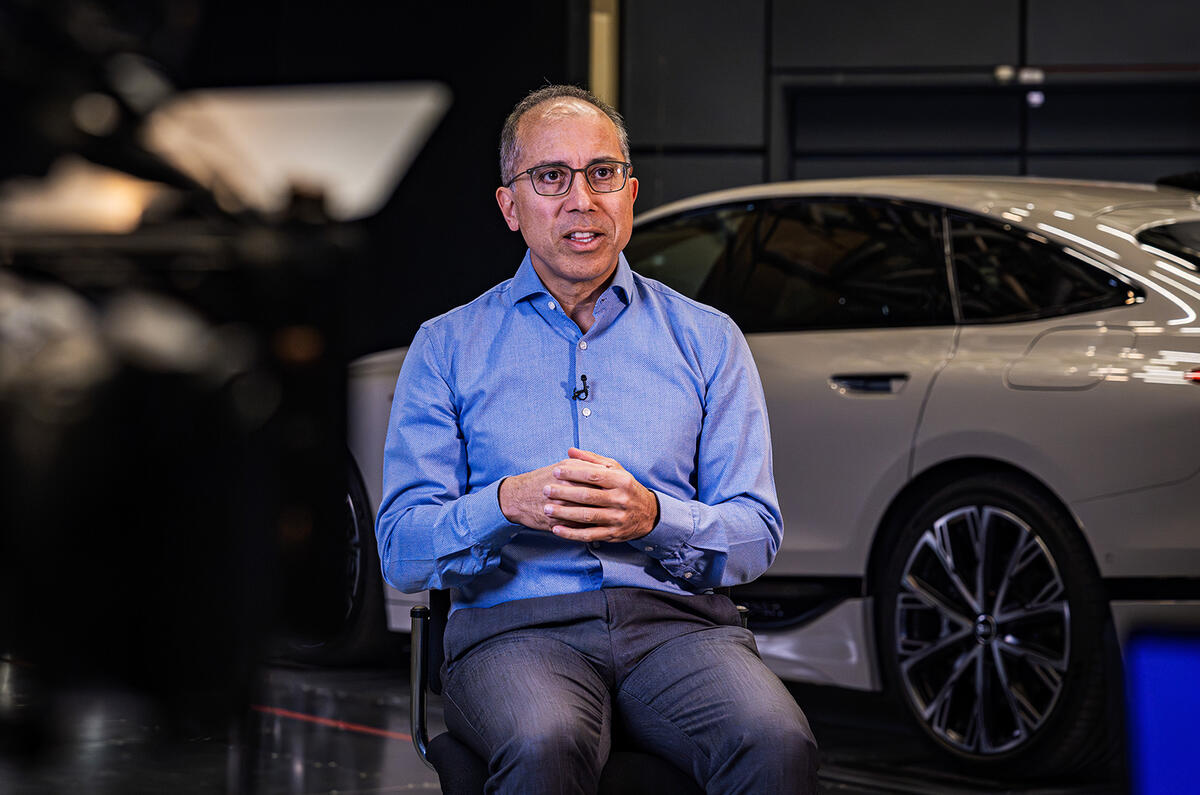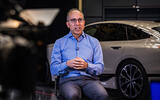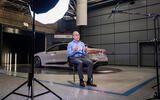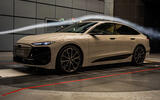Welcome to part two of our exclusive four-part interview series, where we’re endeavouring to find out what Audi’s iconic slogan – Vorsprung durch Technik, or progress through technology – means to the people at the forefront of Audi design and engineering.
Here we venture inside Audi’s state-of-the-art, top-secret wind tunnel in Ingolstadt, Germany, to sit down with head of aerodynamics and aeroacoustics, Dr. Moni Islam.
Also in the series: Exterior design extraordinaire Frank Lamberty; lighting expert Christoph Häußinger; and interior designer Ramon Bäurle.
Discover the all-electric Audi e-tron range
Introduce yourself and what you do...
I’m Dr. Moni Islam and I’m the head of aerodynamics and aeroacoustics development, which means in practice that I have several different tasks. On the one hand, I’m responsible for overseeing the development process for these two technical disciplines for all Audi production vehicles from their initial conception all the way up to the start of production.
On the other hand, I’m responsible for ensuring that in my department we work with the relevant technologies and processes that enable top-class results.
What’s your personal interpretation of Vorsprung durch Technik?
For me personally, Vorsprung durch Technik means pushing the boundaries of technological innovation to do something that hasn’t been done before.
As an engineer, I like to do things that are new and difficult, and I find it really cool to do things that others can’t do or haven’t done before. Being able to do this here is what first brought me to Audi many years ago.
Which project have you been most proud of at Audi? One that you think channels the Vorsprung durch Technik spirit.
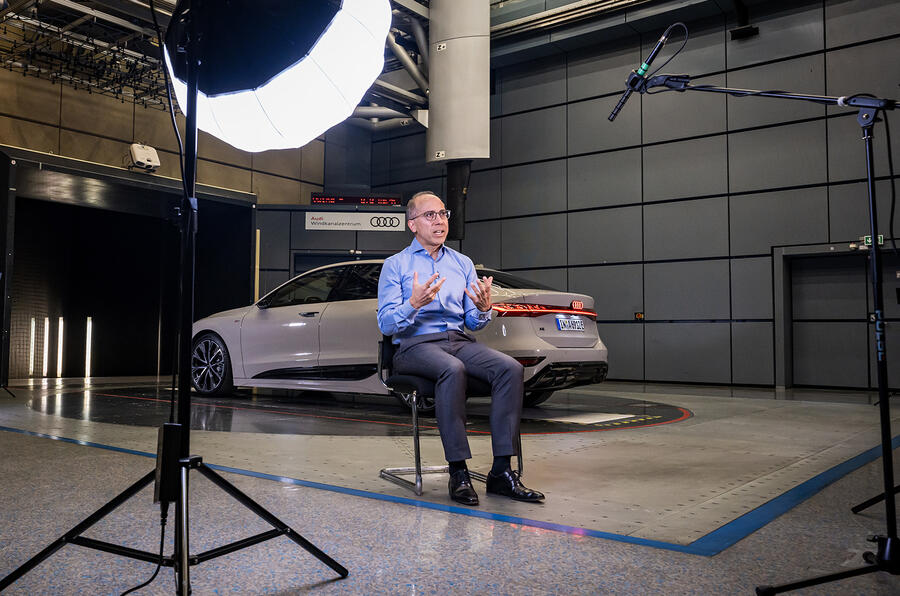
I think it would be a project that wasn’t so much in the public limelight, but had a very big impact on the way the industry works in our technical discipline. A number of years ago we worked on developing a groundbreaking new software technology for aerodynamics simulations, which gave us a significant advantage in accuracy and flexibility.
People thought it couldn’t be done, so when we went public with it, it took the entire industry by surprise, because we showed that it was in fact possible, and we were the first team to achieve this globally.
Aerodynamic innovation has been at the very heart of Audi’s Vorsprung durch Technik philosophy for more than 50 years. Which models throughout Audi’s history brought the biggest steps forward in aero design and efficiency?
There is no doubt that the Audi 100 in 1982 and the Audi A2 in 1999 were the two biggest innovators in the world of combustion-engine vehicles. Both were driven by the need to significantly improve fuel consumption and so their design was fundamentally aero-driven.
At the time, the very streamlined greenhouse, the flush glazing, and the aerodynamically optimised body trim of the Audi 100 were quite revolutionary in automobile design. The A2 also pushed the boundaries of car design with its proportions based on the work of Wunibald Kamm, and its optimised underbody and wheels.
Now that we’ve entered the era of EVs, I am very impressed by what we achieved with our e-tron GT and A6 e-tron. In a very general sense, I’m proud that we were able to demonstrate with these two vehicles that there is no fundamental incompatibility between top-notch aerodynamics and progressive, eye-catching design.
In the case of the e-tron GT, we were able to make use of active vehicle components to achieve outstanding aerodynamics results, while the A6 e-tron makes use of a vast number of detailed engineering solutions to reach its optimum.
On that note, what inherent advantages does electrification bring to the worlds of aerodynamic design and efficiency? And what about disadvantages? How is Audi overcoming these?
Electrification has given a huge boost to us aerodynamicists, because efficiency is now of such paramount importance, and in real-world driving, aerodynamic drag is the dominant driving resistance. And because driving range is so important to our customers, it becomes financially viable for us to include technical measures in the vehicle that reduce its drag that wouldn’t previously have been possible.
In terms of the vehicle concept, electric vehicles have a number of significant advantages for us. First, there’s the completely closed and flat underbody, which is really an aerodynamicist’s dream. Then, because the electric powertrain is so efficient, the cooling-air requirements while driving are far easier to deal with than in combustion engines.
The biggest disadvantage for the vehicle’s aerodynamics derives from the size and weight of the battery. These create the necessity for large, wide wheels, which present us with a very big challenge, while also increasing the frontal area of the vehicle.
In the case of the former, we now place considerable effort in the aerodynamic optimisation of wheels and tyres and generally offer our customers a variety of aero wheels in our new cars. We do this together with our exterior designers, so these wheels are really very aesthetically attractive, not just efficient!
Why is aerodynamic efficiency so important for drivers, especially in the electric era?
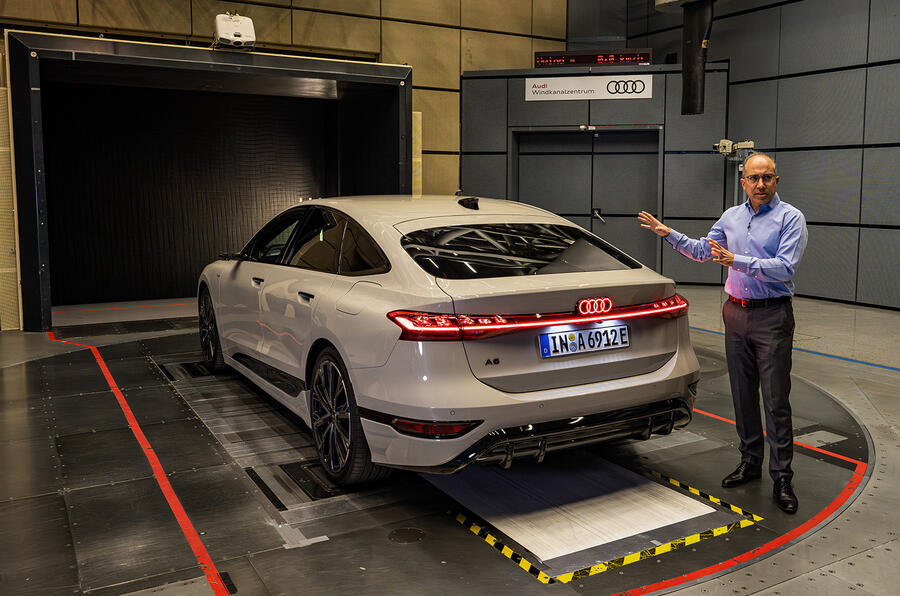
For many if not most people, aerodynamics is something very abstract, perhaps because it deals with complex physics and mathematics, but likely also because one can’t see its effect frequently in everyday life.
As I mentioned earlier, as a driver of an all-electric Audi e-tron you can feel the effects of aerodynamic optimisation by virtue of options like the aero wheels or the air suspension and the effect that they have on improving the vehicle’s driving range and energy consumption. More generally though, the large driving range that a vehicle like the A6 e-tron enables is a direct consequence of the vehicle’s top-class aerodynamics.
But our innovation as aerodynamicists also has other consequences: One of the goals of our work is to come up with technical solutions that give our exterior designers as much freedom as possible to realise progressive aesthetics of the vehicle. So we work on optimising areas of the vehicle that aren’t immediately visible, like the cooling-air intake or the underbody, or we create technical solutions together which work for both of us, like attractive aero wheels.
And last but not least, we also spend a lot of time on optimising the aeroacoustics, which our customers directly experience as very low wind noise when they travel in an Audi.
What advances in wind tunnel and computer-aided design technology is Audi making to ensure its cars are at the cutting-edge of aerodynamic design?
I’m very thankful for the fact that we have excellent tools at our disposal to work with here at Audi.
Our wind tunnel was the first automotive wind tunnel to combine full ground simulation for aerodynamics with top-class aeroacoustics functionality, some of which was even patented by us. It has now been in operation for 25 years, and because we not only work here, but run and maintain the facility ourselves, we have built up a treasure trove of expertise that is really irreplaceable.
A very important recent booster for productivity and accuracy in our work in the wind tunnel has been the advent of rapid-prototyping technology, also known as 3D printing. It’s been in use in Formula 1 development for quite some time, but now it’s a standard for us as well…
And, it has really raised the bar for our other key tool, computer simulation, because our wind tunnel tests have made a big leap in accuracy and efficiency. To give you a feel for what magnitude of computing resources we work with, we have 60,000 processor cores at our disposal, and last year we ran simulations totalling nearly 300 million CPU-hours.
For the A6 e-tron alone we did more than 3000 simulations to optimise the shape and supplement our wind tunnel tests. Modern aerodynamics development is in my view inconceivable without using computer simulations and wind tunnel testing hand in hand.
The Audi A6 e-tron is the most aerodynamic car Audi has ever created. How has this been achieved?
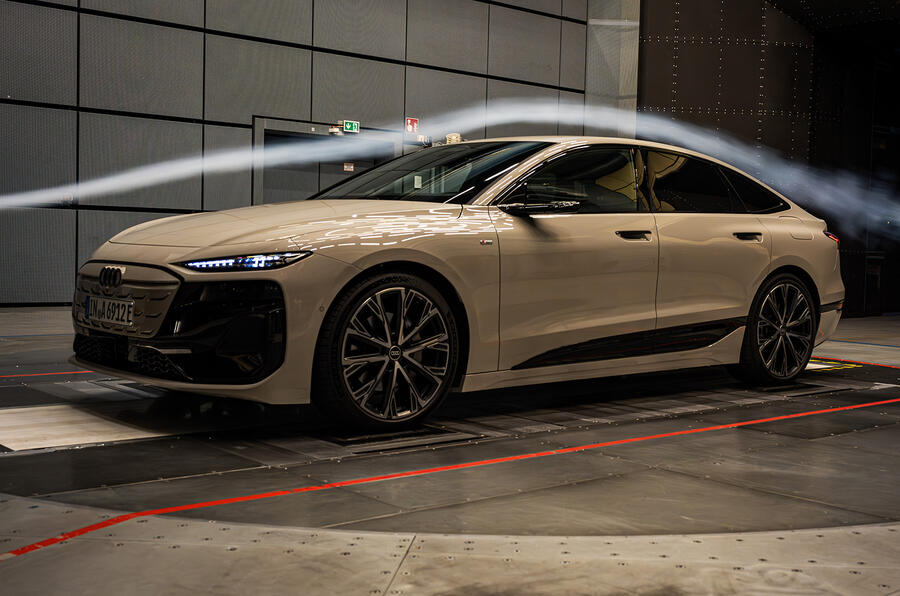
Probably the most visible aerodynamic highlight is the optional virtual wing mirror, which is in its second generation on the A6 e-tron. Already in the WLTP certification cycle it results in about four miles more driving range, but over longer distances at constant speeds it offers an even greater advantage.
The active inlet shutters offer dynamic control of the cooling-air flow tailored to the needs of the vehicle’s thermal management system and thereby create an optimum for the flow of air through the vehicle.
The optional air suspension also improves the vehicle’s aerodynamics, by lowering its ride height during motorway driving. Everything else in the vehicle’s aerodynamics has to do with the many, many details of the aerodynamic design – ranging from the design of the rear diffuser in the underbody to the details of the tyre design. It’s only through the cumulative effect of all these details, and the optimisation of their interaction with each other, that we were able to reach the spectacularly low drag coefficient of 0.21.
Where do you think Vorsprung durch Technik will take Audi in the future?
For us aerodynamicists, I think Vorsprung durch Technik will lead us towards cutting-edge analysis and development methods, like artificial intelligence and even more computer simulations.
For our vehicles, it will take them even closer to the physical limit of what is possible in drag-coefficient reduction – and there is definitely a limit! – all the while making sure that an Audi always remains an Audi.

